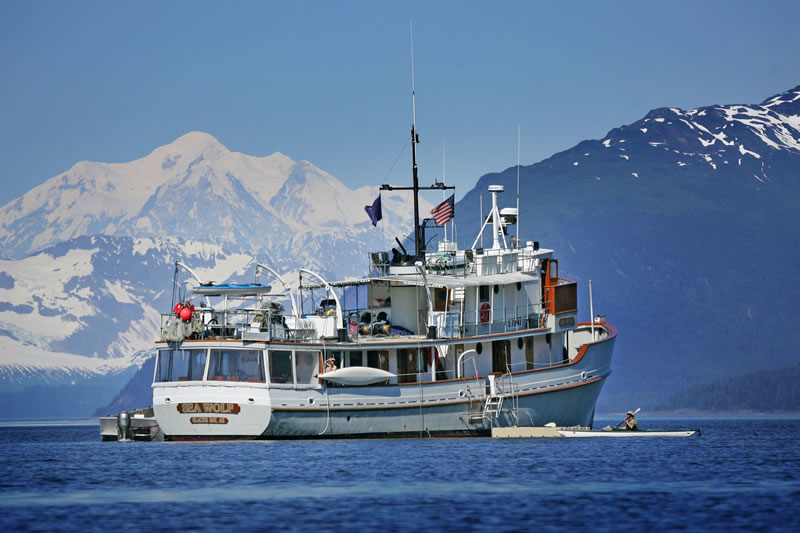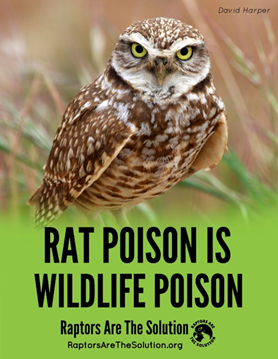Mar 2023 Newsletter: Healing the World: Himalayas and Beyond
Hello!
|
Big news! The EPA has proposed the first-ever national drinking water standard to regulate six PFAS in drinking water — the culmination of our Institute’s and our scientific and NGO partners decade of work to reduce harm from these forever chemicals. Meanwhile I hope you are ready for spring. I ended winter with a cross-country skiing trip to Wyoming and will begin spring with a lecture and skiing trip to Alaska. I will travel again to Alaska this summer for a boat adventure in Glacier Bay on the luxurious 12 passenger boat Sea Wolf from July 8-17 and to speak at the Gustavus public library. On Sea Wolf, we will enjoy kayaking on calm waters and hiking amidst diverse wildlife, glaciers, and tranquility. I’ve reserved the boat for my friends and there are a couple of newly open spots, so let me know if you’d like more information. On May 20 and 21,the Himalayan Fair returns to Live Oak Park. Please join me for Himalayan crafts, food, music, and dance. I started the Fair 39 years ago after enjoying many festivals as I trekked for ten months across Bhutan, Sikkim, Nepal, and India. I hope to see you there. In other Himalayan news, please read this uplifting article about successful reforestation efforts in Nepal. It all started decades ago when large swaths of national forest land were handed to local communities and millions of volunteers were recruited to protect and renew the ecosystem. Since 1988 greenery in Nepal has sprung back, with forests now covering 45 percent of the country’s land—such a happy change! I also recommend watching the moving Oscar-nominated film Lunana: A Yak in the Classroom set in Bhutan. And for those who may be interested in traveling to this region, I have a free Nepalese language course from my trek across the Himalayas on my website. While it may not be obvious, the Himalayan Fair and the Institute’s toxics work are connected by Tikkun Olam—the topic of my 2022 commencement address to the University of San Francisco’s College of Arts and Sciences (newly available on YouTube). Tikkun Olam means “healing the world” in Hebrew. As I told Earth Island Journal, “by connecting people to art, culture, and food from different communities, the fair helps foster understanding across differences. And that helps make the world a little better, in a way that’s different but just as important as keeping toxic chemicals out of our land, water, and bodies…” Meanwhile, the Institute is hard at work with our ongoing projects and timely issues. For example, when I heard about the derailment of a train carrying vinyl chloride, I remembered the chemical industry’s suppression of research showing this chemical caused a fatal liver cancer. The finding of this cancer first in mice, then in rats, and finally in workers was described in David Rosner and Gerald Markowitz’s exposé Deceit and Denial. I contacted David and Gerald to suggest writing an opinion piece to renew attention on this industry’s duplicity. David responded right away, suggesting we take the lead. Our science communications director Rebecca Fuoco worked with David and Gerald to publish op-eds in the New York Times and the Los Angeles Times. Last week, both op-eds were introduced into the congressional record by Senator Sheldon Whitehouse during a committee hearing about the train derailment. Finally, I was honored by textile leader Maharam, as part of their “Stories” series, featuring a favorite excerpt from Breaking Trail about my 1976 summit attempt on Mt. Everest where I set an altitude record for an American woman at that time. Our Institute’s work towards a healthier world is reminiscent of climbing Mt Everest. We assemble a team with a clear goal, overcome storms, avalanches, and an occasional Yeti to achieve the summit. Warm regards, Arlene |
Annual Berkeley Himalayan Fair, May 20 & 21, 2023Please join me at this year’s annual Himalayan Fair. You can enjoy the food, music, dance, crafts and arts of the Himalayas at the Fair, which will be held in Live Oak Park, 1300 Shattuck Avenue in North Berkeley, California on Saturday and Sunday May 20 and 21. The fair’s profits go directly to the Himalayan regions as donations to orphanages, clinics, schools, village water supplies, and other Himalayan charities. Please stop by our booth under the big tree northeast of the stage to enjoy the Himalayan dance and other entertainment. Contact me if you’d like to volunteer at our booth or to help out with the fair. I describe starting the Fair after returning from the Great Himalayan Traverse in my memoir Breaking Trail. More information about the Himalayan Fair is here. |
Raptors are the SolutionWhile you might consider rats as pests, beloved pet cats and dogs, birds of prey, foxes and other wildlife see them as delectable treats. That’s why rat poison can be dangerous. Once a rat eats a toxic rodenticide, the poison becomes a lethal part of the local food chain. The poisoned rat poses a grave threat to wildlife, ecosystems, pets, and even children. In other words, rat poison isn’t just rat poison. And due to lax regulation and loopholes, some of the worst of the worst anticoagulant rodenticides continue to be used. Rat poison leads to terrible inadvertent consequences–it kills the very predators that keep the rodent population in check. A much better and more humane solution is to protect raptors–owls, hawks, eagles, and other birds and predators that feast on rats. That’s the goal of Raptors Are the Solution (RATS), a project of Earth Island Institute. RATS was founded in the San Francisco Bay Area in 2011 after Cooper’s hawks began falling dead on the streets from eating poisoned rats. RATS is doing important work educating people about the beneficial role of birds of prey and about the danger they face from the widespread use of rat poison. I am honored to be on their scientific advisory board. Thriving raptor populations can control rat populations and help keep our ecosystems, pets, and children safe. According to RATS, better measures against rats include:
You can learn more about this organization and supporting these magnificent birds here. |
An Unwanted Ingredient: Chlorinated ParaffinsBy Lydia Jahl Modern kitchens often contain numerous appliances to make the perfect gourmet meal. However, your kitchen may contain an unwanted ingredient: a class of flame retardants called chlorinated paraffins. These chemicals are toxic, persistent, bioaccumulative and listed for elimination in the Stockholm convention. Still they are produced in very high volumes and used in products as flame retardants, plasticizers and lubricants. Because of such uses, short-chain chlorinated paraffins, possible human carcinogens, have been detected in human livers, kidneys, fat, and breast milk. In 2017, Swedish scientists found that 12 out of 16 hand blenders tested leaked chlorinated paraffins into food, likely from direct contact between the food and blender components. The researchers estimated that adults in Sweden using a hand blender once per day could increase their dietary intake of chlorinated paraffins up to 26 times their normal exposure from food. Recent testing of many kitchen appliances found that chlorinated paraffins are commonly used to lubricate hinges in products such as refrigerators, microwave ovens, and food processors. In their study, brand-new appliances had the highest concentrations, suggesting chlorinated paraffins are released over time. To reduce your exposure, clean products frequently, do not allow your food to contact the lubricant in appliances, and ventilate your kitchen while using a baking oven. Learn more about flame retardants and how to avoid them at our Six Classes website. |
How Plastics Make Us Fatby Carol Kwiatkowski What do genetics, diet, exercise, and plastic have in common? They all are factors in the obesity pandemic, which has led to a tripling of the number of obese people worldwide since 1975 and more than 41 million children under five being overweight or obese. Researchers at the Norwegian University of Science and Technology published a paper identifying which types of plastic contained “metabolism disrupting chemicals” or MDCs. The study is unique in that the authors did not look at the specific plastic chemicals known to be MDCs, such as bisphenols and phthalates – members of our Six Classes of chemicals of concern. Instead, they sampled 34 everyday plastic products, assessing the metabolic effects of the entire product including chemicals that could not be individually identified. Eleven of the products induced adipogenesis (fat cell development). Of the eight types of plastics sampled, polyurethane (PUR) and polyvinyl chloride (PVC) were the most potent obesogens, while polyethylene terephthalate (PET), high-density polyethylene (HDPE), and polylactic acid (PLA) were consistently inactive. The authors concluded that “daily use plastics contain potent mixtures of metabolism disrupting chemicals and can, therefore, be a relevant, yet underestimated, environmental factor contributing to obesity.” My advice? Opt for products made out of non-plastic materials and avoid products with recycling code 3 (PVC). |
Green Science Policy Institute in the Newsby Rebecca Fuoco Below are recent news articles, blogs, podcasts, newsletters, and more that have featured our Institute’s work and expertise.
|
CalendarMarch 27, 2023 at 5:30pm: Arlene will share her favorite images and dramatic stories from her memoir, Breaking Trail: A Climbing Life, illustrating her climbs of remote and beautiful high peaks and her scientific research and policy work with the Green Science Policy Institute to reduce the use of harmful chemicals. Buy tickets here. March 29, 2023 at 6:30pm: Arlene will speak about Mountains and Molecules. May 20 & 21, 2023: Enjoy the food, music, dance, crafts and arts of the Himalayas. Profits to Himalayan charities. Contact Arlene@ArleneBlum.com if you’d like to volunteer to help out at her booth under the big tree northeast of the stage. Please do stop by her booth to say hello and enjoy the Himalayan entertainment. More information about the Himalayan Fair is here. |






